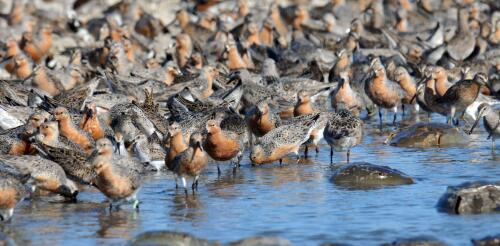China
Rising trade tensions between the U.S. and the European Union, two of the most important global leaders when it comes to climate policy, could undermine key climate initiatives of both governments and make it harder for the world to put the brakes on climate change. The two have clashed over the 2022 Inflation Reduction Act’s requirements that products be made in America to receive certain U.S. subsidies. The EU recently announced plans for its own domestic-only clean technology subsidies in response. The U.S. and EU also now have competing carbon tariff proposals, and these could end up undermining each other. In December 2022, the EU reached a provisional agreement on a carbon border adjustment mechanism. It will put carbon-based tariffs on steel, aluminum and other industrial imports that aren’t regulated by comparable climate policies in their home countries. The Biden administration, meanwhile, proposed a “green steel club” of nations that would coo...
China is well known for its medicinal use of wild plants, a tradition that dates back thousands of years. These traditional Chinese medicines include many wild orchids, some quite showy. Typically, orchids are consumed alone or mixed with other herbs in tea or soup. The health benefits vary depending on species; conditions for which orchids are used include immune system boosting, hypertension and stroke. Many of these medicinal orchids are among the 40-plus species in the genus Dendrobium. In recent decades, supplies of wild-sourced medicinal Dendrobium orchids have declined steadily, with shortages of some types. This is occurring in the limestone regions of Guizhou and Guangxi, the main area where Dendrobium has grown naturally, due to a combination of overharvesting by collectors and habitat loss. I am an ecologist and lead several research projects in southwestern China, where the nation’s first orchid nature preserve is located in a zone with a highly diverse asso...
More than one-third of all people in the world live in cities, towns and villages on coasts. They rely on healthy oceans for many things, including food, income, a stable climate and ready connections to nature. But as coastal populations continue to grow, governments are under increasing pressure to ramp up development for transportation, power generation and economic growth. Projects like these can have heavy impacts on lands, waters and wildlife. World leaders are gathering in Montreal this week for the long-awaited Conference of Parties to the United Nations Convention on Biological Diversity, or COP15. This treaty, which was adopted at the 1992 Earth Summit in Rio de Janeiro, is designed to protect biodiversity – the variety of life on Earth, from genes to entire ecosystems. At the two-week conference, nations are expected to officially adopt the Post-2020 Global Biodiversity Framework, which will guide global conservation efforts over the next decade. China is thi...
As the world parses what was achieved at the U.N. climate change conference in Egypt, negotiators are convening in Montreal to set goals for curbing Earth’s other crisis: loss of living species. Starting on Dec. 7, 2022, 196 nations that have ratified the U.N. Convention on Biological Diversity will hold their 15th Conference of the Parties, or COP15. The convention, which was adopted at the 1992 Earth Summit in Rio de Janeiro, is designed to promote sustainable development by protecting biodiversity – the variety of life on Earth, from genes up to entire ecosystems. Today, experts widely agree that biodiversity is at risk. Because of human activities – especially overhunting, overfishing and altering land – species are disappearing from the planet at 50 to 100 times the historic rate. The United Nations calls this decline a “nature crisis.” This meeting was originally scheduled to take place in Kunming, China, in 2020 but was rescheduled be...
A biodiversity crisis is reducing the variety of life on Earth. Under pressure from land and water pollution, development, overhunting, poaching, climate change and species invasions, approximately 1 million plant and animal species are at risk of extinction. One ambitious proposal for stemming these losses is the international initiative known as 30x30: conserving and protecting at least 30% of Earth’s surface, on land and at sea, by 2030. Currently, 112 countries support this initiative, including the United States. More nations may announce their support at the international biodiversity conference that opens Dec. 7, 2022, in Montreal. Scientists say that protecting 30% of Earth’s surface will help species and ecosystems recover from the stresses that are depleting them. It also will conserve valuable services that nature provides to humans, such as buffering coasts from storms and filtering drinking water. Protecting forests and grasslands can help slow climate...




